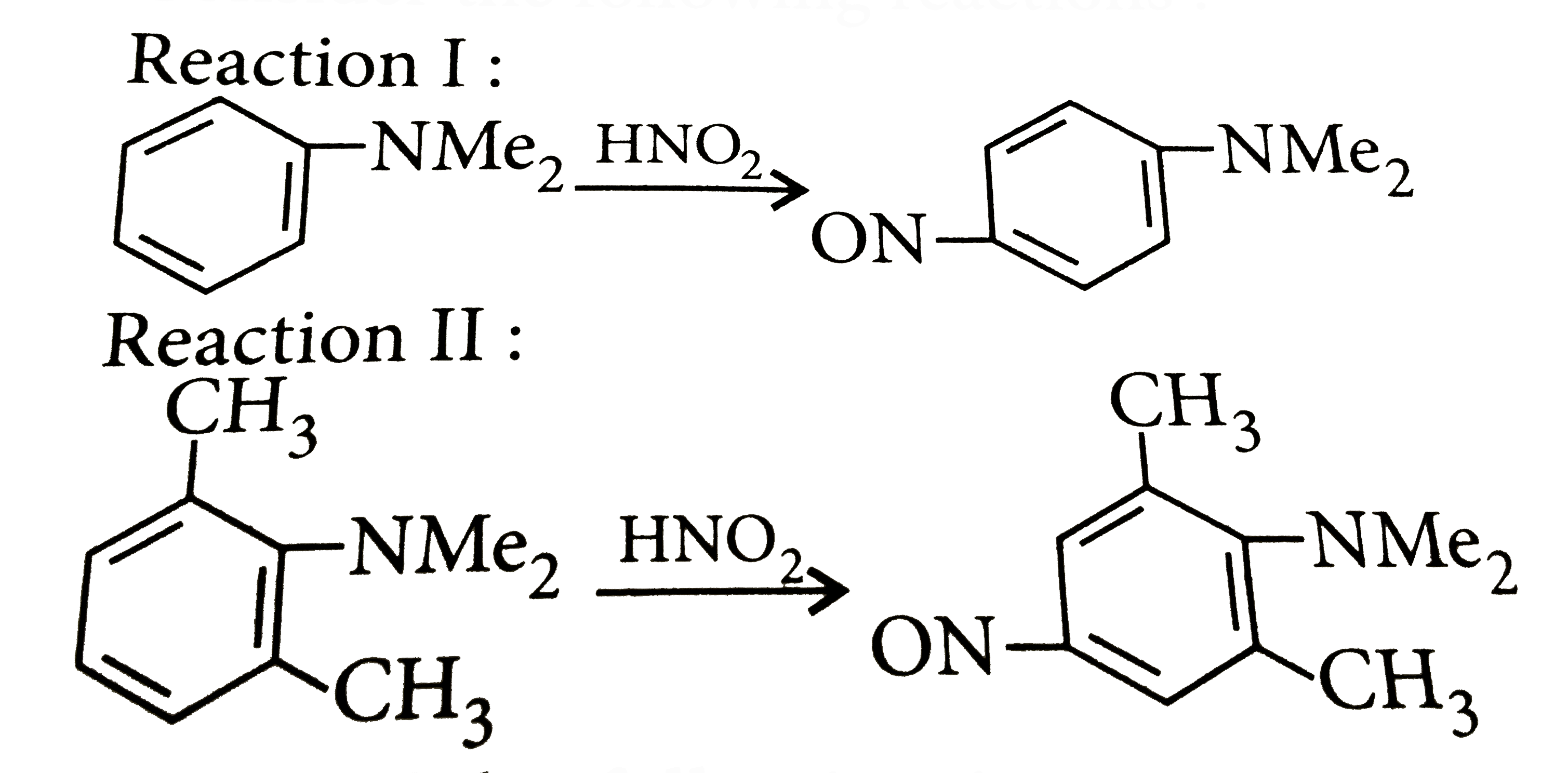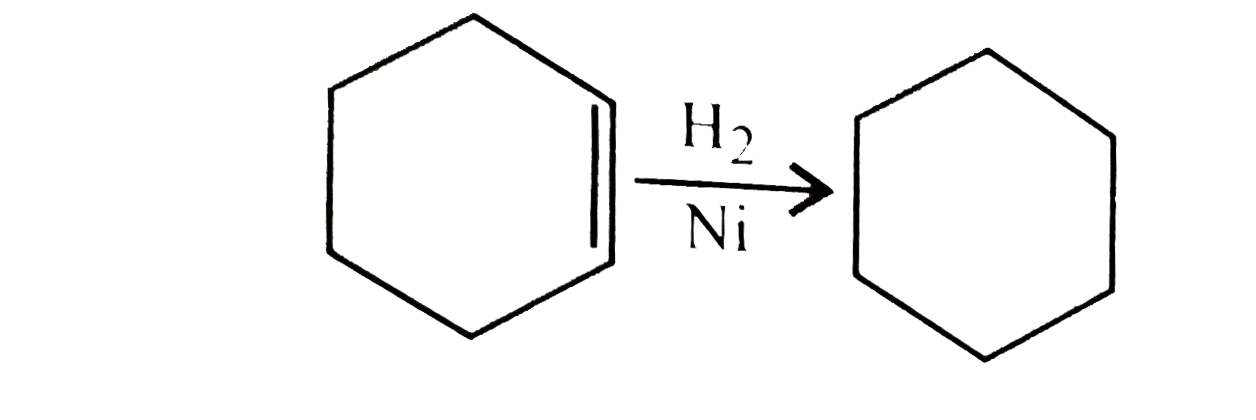Which of these reaction is correct?
Cl−+Br2→Br−+Cl2
Mohr's salt NaOH solution−−−−−−−−→NH3↑⏐⏐(g)
K2Cr2O7 solutionSO3−−→Green colour solution
FeCl2NaOH−−−→ (ppt. coloured)Excess NaOH−−−−−−−→Soluble complex
The correct Answer is:B
To determine which of the given reactions is correct, we will analyze each option step by step.
Step 1: Analyze Reaction A
Reaction A: Cl⁻ + Br₂ → Br⁻ + Cl₂
- This reaction suggests that chloride ions (Cl⁻) are oxidizing bromine (Br₂) to bromide ions (Br⁻) while being oxidized to chlorine gas (Cl₂).
- To assess feasibility, we need to check the standard cell potential (E°cell) for this reaction.
- The half-reaction for Cl⁻ to Cl₂ has a standard reduction potential of -1.36 V, while the half-reaction for Br₂ to Br⁻ has a standard reduction potential of +1.07 V.
- The overall cell potential (E°cell) can be calculated, and it turns out to be negative, indicating that this reaction is not feasible.
Conclusion: Reaction A is not correct.
Step 2: Analyze Reaction B
Reaction B: Mohr's salt (NH₄)₂Fe(SO₄)₂·6H₂O with NaOH gives ammonia gas.
- Mohr's salt, when treated with sodium hydroxide (NaOH), will produce ammonia (NH₃) gas.
- The reaction can be represented as:
NH₄++OH−→NH₃+H₂O
- This is a well-known reaction where ammonium ions are converted to ammonia gas in the presence of a strong base.
Conclusion: Reaction B is correct.
Step 3: Analyze Reaction C
Reaction C: K₂Cr₂O₇ with SO₃ gives a green color solution.
- K₂Cr₂O₇ (potassium dichromate) is a strong oxidizing agent.
- The reaction with SO₃ (sulfur trioxide) does not occur because SO₃ is already in a high oxidation state (+6) and cannot be oxidized further.
- Therefore, this reaction is not feasible.
Conclusion: Reaction C is not correct.
Step 4: Analyze Reaction D
Reaction D: FeCl₂ with NaOH gives a colored precipitate and with excess NaOH gives a soluble complex.
- The reaction of FeCl₂ with NaOH produces ferrous hydroxide (Fe(OH)₂), which is a green precipitate:
FeCl₂+2NaOH→Fe(OH)₂+2NaCl
- However, when excess NaOH is added, Fe(OH)₂ does not dissolve to form a soluble complex; instead, it remains as a precipitate.
- Therefore, this reaction is also not feasible as described.
Conclusion: Reaction D is not correct.
Final Conclusion
The only correct reaction from the options provided is Option B.
---
Reaction A: Cl⁻ + Br₂ → Br⁻ + Cl₂
- To assess feasibility, we need to check the standard cell potential (E°cell) for this reaction.
- The half-reaction for Cl⁻ to Cl₂ has a standard reduction potential of -1.36 V, while the half-reaction for Br₂ to Br⁻ has a standard reduction potential of +1.07 V.
- The overall cell potential (E°cell) can be calculated, and it turns out to be negative, indicating that this reaction is not feasible.
Reaction B: Mohr's salt (NH₄)₂Fe(SO₄)₂·6H₂O with NaOH gives ammonia gas.
- The reaction can be represented as:
NH₄++OH−→NH₃+H₂O
- This is a well-known reaction where ammonium ions are converted to ammonia gas in the presence of a strong base.
Reaction C: K₂Cr₂O₇ with SO₃ gives a green color solution.
- The reaction with SO₃ (sulfur trioxide) does not occur because SO₃ is already in a high oxidation state (+6) and cannot be oxidized further.
- Therefore, this reaction is not feasible.
Reaction D: FeCl₂ with NaOH gives a colored precipitate and with excess NaOH gives a soluble complex.
FeCl₂+2NaOH→Fe(OH)₂+2NaCl
- However, when excess NaOH is added, Fe(OH)₂ does not dissolve to form a soluble complex; instead, it remains as a precipitate.
- Therefore, this reaction is also not feasible as described.
The only correct reaction from the options provided is Option B.
Topper's Solved these Questions
- BOOK - VK JAISWAL ENGLISHCHAPTER - TYPES OF REACTIONSEXERCISE - LEVEL 344videos
TYPES OF REACTIONS
- BOOK - VK JAISWAL ENGLISHCHAPTER - TYPES OF REACTIONSEXERCISE - ONE OR MORE ANSWERS IS/ARE CORRECT40videos
TYPES OF REACTIONS
- BOOK - VK JAISWAL ENGLISHCHAPTER - TYPES OF REACTIONSEXERCISE - SUBJECTIVE PROBLEMS42videos
TYPES OF REACTIONS
- BOOK - VK JAISWAL ENGLISHCHAPTER - s-BLOCK ELEMENTSEXERCISE - SUBJECTIVE PROBLEMS2videos
s-BLOCK ELEMENTS
Similar Questions
Knowledge Check
- Question 1 - Select One
Which of the following is correct for the reaction ?
 AA is cyanohydrinBNucleophilic-addition reactionCThe above reaction is not shown by alkensDAll of these
AA is cyanohydrinBNucleophilic-addition reactionCThe above reaction is not shown by alkensDAll of these
Which of the following is correct for a nuclear reaction ?
View SolutionConsider the following reactions :

Which of the following is a correct comparison of rate of reaction ?View SolutionWhich of the following methods for the calculation of heat of a reaction is not correct?
View SolutionWhich of the following is correct if reaction quotient (Q)=1?
View SolutionWhich of the following is correct in an enzyme-controlled reaction ?
View SolutionWhich of the following is correct for a first order reaction ?
View SolutionWhich of the following reaction is correct :
View Solution


